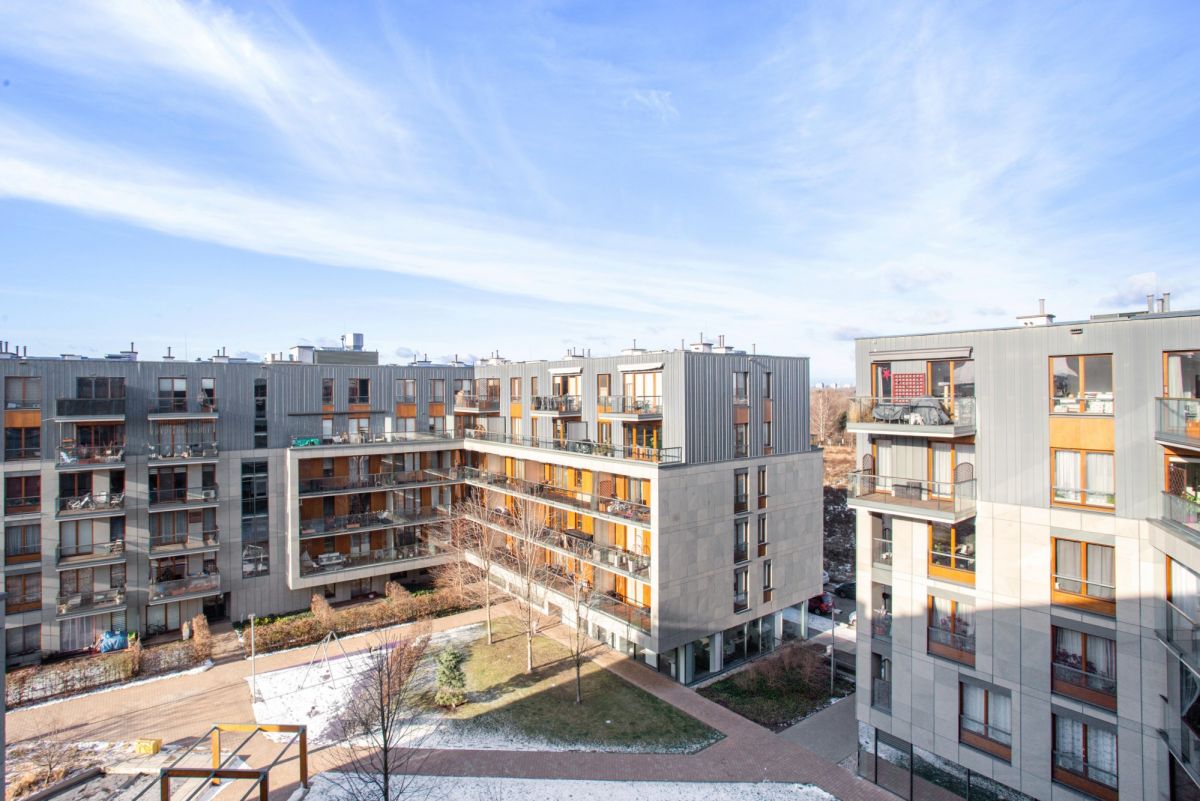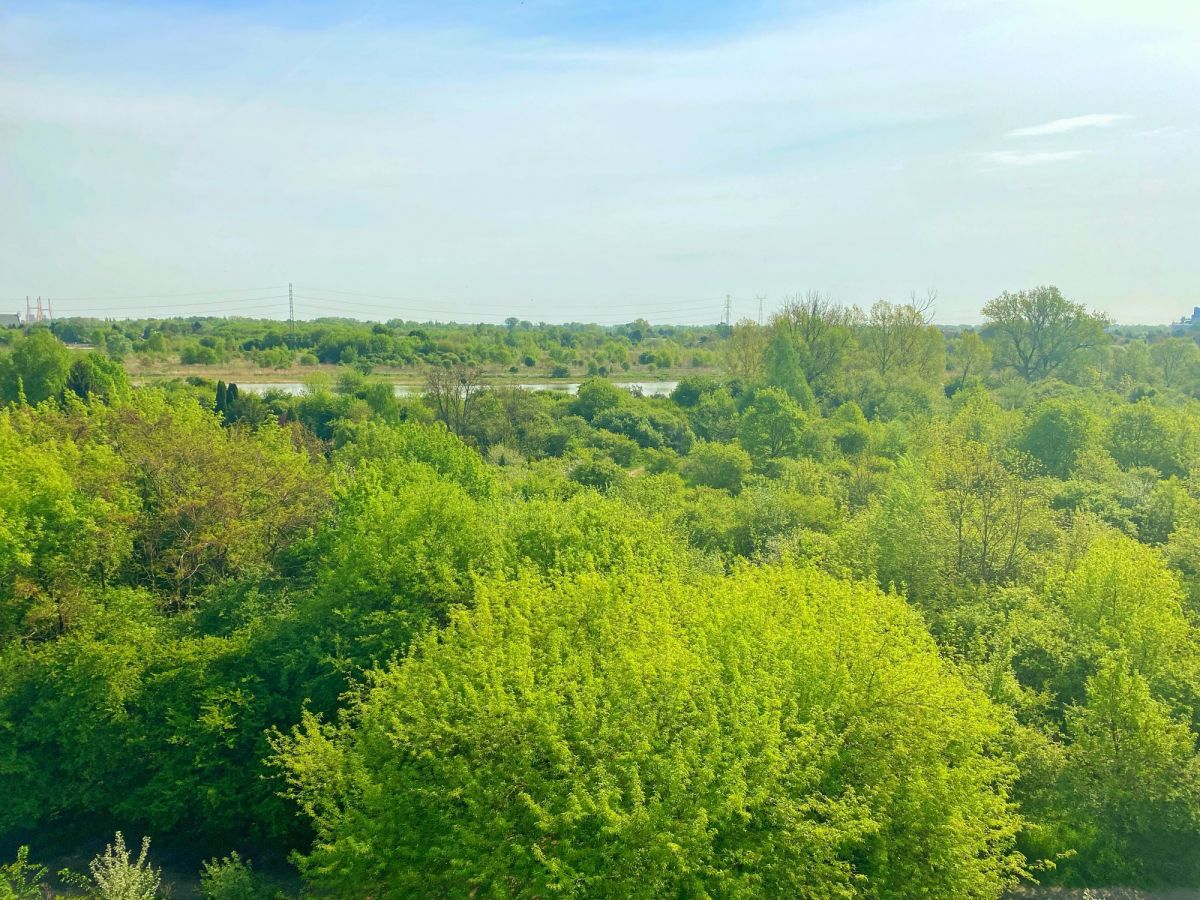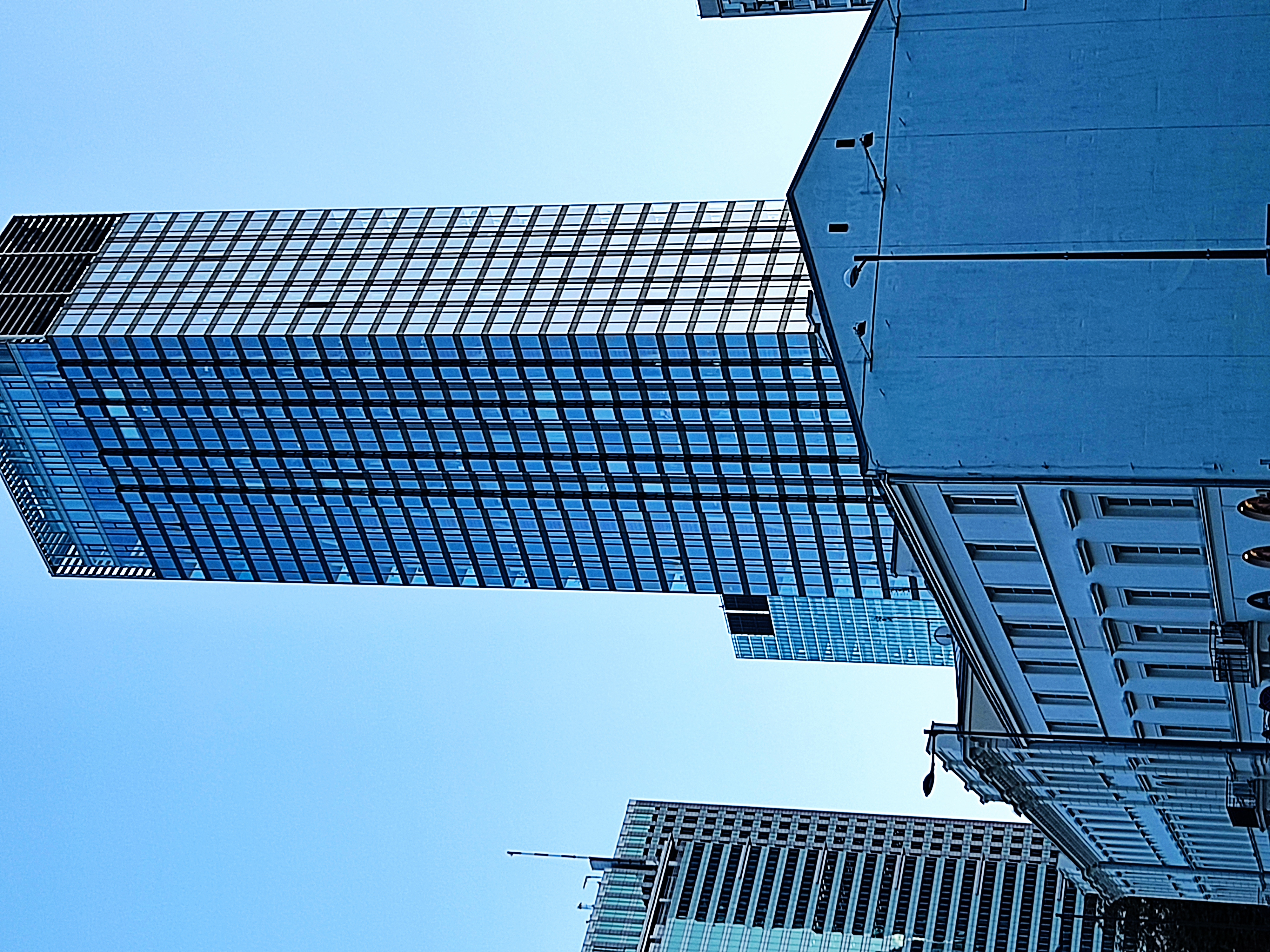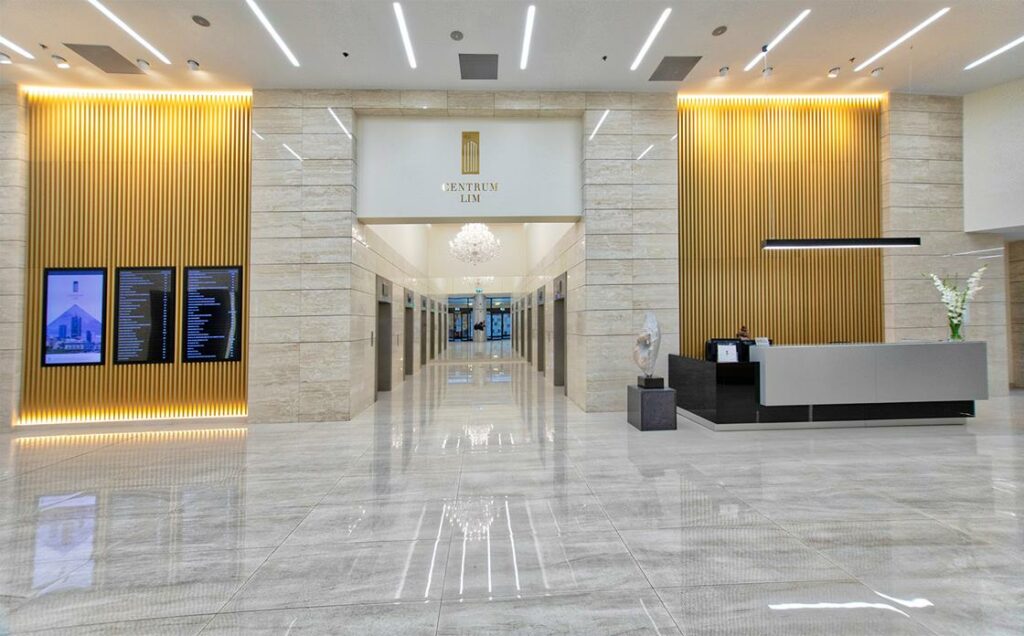Mokotow. Microdistrict (obszar) “Sadyba” (Sadyba)

Mokotow. Microdistrict (obszar) “Sadyba” (Sadyba)
The boundaries of the Sadyba microdistrict are determined as follows:
Streets Gołkowska – Idzikowskiego – Witosa – Sobieskiego – Nałęczowska, Goplańska (along the border of the commune) – Okrężna – Jeziorna – along the western shore of Lake Czerniakowskiego.
Streets Gołkowska – Idzikowskiego – Witosa – Sobieskiego – Nałęczowska, Goplańska (along the border of the commune) – Okrężna – Jeziorna – along the western shore of Lake Czerniakowskiego.
The residential microdistrict Sadyba was formed in 1997. Located in Nizhny Mokotov.
The name comes from the officers' housing cooperative "Sadyba", founded in 1923, which built houses for officers along the "Czerniaków" fortress. Previously, the territory of present-day Sadyby was called Czerniaków. Hence the name of the second residential area with villas for high-ranking officials, built since 1921 - the Czerniaków Garden City, founded in the 1920s according to the English idea of a garden city. Over time, Sadyba came to be used to describe both places, as well as the residential complexes built in the surrounding area. The name Sadyba meant a military settlement in Kresach of the Second Polish Republic.
The microdistrict (obszar) „Sadyba” consists of large-panel residential buildings, the Sadyba residential area, the I and II officer colonies (around the fort), the Czerniaków Garden City and low-rise buildings between the street. Św. Bonifacego and Nałęczowską.
Sadyba can be divided into Old Sadyba, mainly residential for the upper classes, and New Sadyba, with modern shops and high-rise apartments from the communist era. New Sadyba can be roughly divided by Świętego Bonifacego street, south of the Sadyba Best shopping center. Sadyb has a large number of home and public gardens, which are looked after by residents.
New investments are currently being completed on Nałęczowskiej Street.
History of the Sadyba neighborhood
In 1883-1887, the tsarist authorities erected defensive fortifications with a moat called Fort IX Czerniakowski. Located on both sides of the street. Powsińskiej, at the height of the street. Okrężnej, it was part of the outer ring of a dozen forts around Warsaw. In the 1920s Sadyba Oficerska will arise around it - the cradle of the current Sadyby.
On May 16, 1892, a horse-drawn tram on rails began operating, the predecessor of the first narrow-gauge railway near Warsaw, called kolejką wilanowską. Onav ran along the route from Ronda Mokotowskiego (today Unii Lubelskiej square) to Sq. Bernardyńskiego in Czerniakowie. This first regular route from the center of Warsaw to its outskirts became the engine for the development of the village of Czerniaków and its future neighborhood: Miasta-Ogrodu Czerniaków.
In 1894, Kolejka wilanowska switched from horse-drawn to steam-powered.
In April 1916, the village of Czerniaków (on the territory of which Miasto-Ogród Czerniaków would be created in 1924-39) was included in Warsaw along with such areas as Mokotów, Ochota and Wola.
In 1916, the Przyjaciół Czerniakow Society was created.
In 1919, Goraszewska Street was built, connecting the attractive areas on Lake Czerniakowskim with the street. Powsińską.
In 1921, the company “Miasto-Ogród Czerniaków” was founded. After completing the necessary formalities, she receives several hundred plots with a minimum area of 1000 m2 each, located on the lake and along Goraszewska Street. Later, the company built villas on them in the style of noble estates of the 18th and 19th centuries (for example, the villa at 19 Goraszewskiej Street).
In 1921, Fort IX Czerniakowski was named after General Henryka Dąbrowskiego.
In 1923, a plan was developed for the development of the area around the fort according to the idea of a garden city.
In 1923, the Officers' Construction and Residential Cooperative "Manor" (Officerską Spółdzielnię Budowlano-Mieszkaniową "Sadyba") was registered. Since 1924, in the area around the fort, limited externally by Okrężną Street, a settlement with dozens of picturesquely located, detached one-story and two-story houses, with terraces and gardens, has been built and settled. They are designed by famous pre-war architects. In 1926-28, the organizers and other high-ranking officers of the Polish army with their families moved into these houses.
In 1928, the cooperative "Sadyba" put into operation its last building - a three-story apartment building on the corner of Powsińskiej and Morszyńskiej streets.
In 1929 the Society of Friends of Miasta-Ogrodu Czerniaków was created. It takes ownership of the fort and its buildings
In 1933, in a wooden building near the fort, once used as a summer house for Russian officers, the Society of Friends of the Chernyakov Garden City opened a private secondary school.
In 1935 st. Powsińska extended to Wilanowa. This is allowed by a concrete bridge, which is being built instead of the drawbridge that until now was operated by the fort team. The new bridge mainly serves cars and trams.
In 1936, the remains of the fort on the eastern side of Powsińskiej were blown up, and a public park (now Szczubełka Park) was built in their place.
In 1936, the remains of the fort on the eastern side of Powsińskiej were blown up, and a public park (now Szczubełka Park) was built in their place.
In 1955, a colony of 35 semi-detached houses was put into operation, located along the shore of Jeziorka Czerniakowskiego on Koronowskiej, Jodłowej, Jeziornej, Kąpielowej and Kuracyjnej streets. It includes 31 wooden houses and 4 houses made of hollow blocks and bricks.
In 1956, a public kindergarten was built on the street. Zacisznej, 3.
In 1973, Sadyba grew with a new street - st. Juraty. Until now it was part of the street. Koronowskiej.
In 1973, the wooden bridge over Jeziorem Czerniakowski was dismantled. Even before the Second World War, it connected Sadybę z Siekierkami, Statkowskiego street. It was a continuation of the current street. Goraszewskie. In the same year, a new steel bridge was built across the lake at the extension of the street. Gołkowskiej.
In 1973, authorities officially sanctioned a change in the geographic identification of local residents. In the city plan they rename the area of the current Miasta-Ogrodu. Instead of the name Czerniaków, the name Sadyba is introduced, and the name Czerniaków is now used to designate the area around Bernardyńskiego Square.
On February 18, 1987, Chernyakovskoe Lake received the status of a water-landscape reserve
In 1990, the Social and Cultural Society Miasto Ogród Sadyba was created. His first initiative is the construction of the street. Zdrojowej.
In 1993
On December 12, 1993, Miasto-Ogród Sadyba was entered into the register of monuments as valuable urban planning.
In 2006, the share of green spaces exceeded 60%. Skwer Starszych Panów was protected from development.
In 2008-2011, lighting with gas lamps was revived, streets were repaired, Skwer Starszych Panów was created and landscaped.
In 2012, the Jeziorka Conservation Plan was introduced, which limited development of the reserve.
In 2014, a local plan for Sadyby was agreed upon and introduced, taking into account the founding of miasta-ogrodu.
In 2015, a house on the street. Godebskiego, 14 (1927) is included in the register of monuments.
Sights of the Sadyba microdistrict
- Fort IX (fort “Czerniaków”, since 1938 officially fort Dąbrowskiego, usually fort Czerniakowski or fort “Sadyba”). One of the outer ring forts of the Warsaw Fortress, built in the 1880s. It is located in Sadybi, in the Mokotów district. Powsińska Street passes through its territory. The fort was built around 1883 on a plan resembling a pentagon, with brick barracks, battle shelters and a wet ditch due to its location on a marshy area.
As part of the decision to liquidate the fortress in 1909, in 1913 most of the military structures were blown up, leaving the barracks with a characteristic broken outline and earthen system. In 1924, a residential settlement for officers of the Polish Army was founded in the area around the fortress, which laid the foundation for the residential settlement Sadyba. Before 1947, there were several dozen villas in this area.
During the defense of Warsaw in September 1939, the fort was the site of the heroic defense of the Polish military. The fort played an important role during the Warsaw Uprising of 1944.
After the war, a park was created in the eastern part of the fort, and the western part was occupied by the army until 1990. Since the early 1990s, there has been a warehouse for equipment collected by the Polish Army Museum. At the end of the 1990s, two branches of the museum were opened here: the Museum of Polish Military Equipment and the Katyn Museum (where it functioned). until 2009). Due to the planned move of the Polish Army Museum to the Citadel, the fate of the fort is unknown.
In 1973, the fort was entered into the register of monuments (as Fort "Czerniaków").
- Muzeum Polskiej Techniki Wojskowej (Museum of Polish Military Equipment) is a branch of the Museum of the Polish Army, located in Fort IX Czerniaków in Warsaw at ul. Powsińska 13, in the Mokotów district. The museum is located in a part of the 19th century Russian fort of the 9th Warsaw Fortress, divided by Powsińską Street into two parts - a larger one, currently a museum, and a smaller one - a park. In the early 1990s, simultaneously with the removal of obsolete military equipment from military units, the Polish Army Museum created a warehouse here, which was opened in the late 1990s as an open-air exhibition and a branch of the museum.
The fort houses permanent exhibitions:
"Polish armored weapons 1918-1945." - more than 200 memorabilia of the Polish armored forces.
"Polish military aviation 1917-2000." - more than 300 objects, including the participation of Poles in space exploration
"Polish Military Chaplaincy" is the first permanent exhibition in Poland, showing the last 400 years of the history of this service.
“History and traditions of Fort IX Chernyakovsky” - from its construction in 1883 to the present day.
“Polish armored weapons” - armored weapons, artillery, quartermaster equipment are not only Polish
“Air Force and Air Defense Equipment” – missile weapons, anti-aircraft weapons, aviation, radar and communications equipment.
Festivals are held here with the participation of historical reconstruction groups.
- Historic villa in avant-garde modern style on the street. Buskiej 9, designed by Romuald Gutt in 1936.
- Officer housing and construction cooperative “Sadyba”, founded in 1923. The cooperative built houses for officers along the Czerniaków fortress.
- Garden City Czerniaków is a low-rise residential complex with villas for high-ranking officials, built in 1921. Founded according to the English idea of a garden city. In addition to the villas, the complex also includes the ZSS Sołem apartment buildings and the Prefabrykacja cooperative residential complex.
- Czerniakowski Cemetery (Cmentarz Czerniakowski), which has been in operation since the beginning of the 20th century. Here are the graves of the Warsaw rebels. Located in the center of Sadyba. Also worth noting is the chapel-mausoleum of the family of Stanisława Chmielarza, built in 1927.
Historical residential complexes in the Sadyba microdistrict
Houses ZSS Spolem
Three-story buildings built in the early 20s for the leadership of the Union of Food Cooperatives "Społem" (Społem Street). This is the only cooperative development complex implemented in Mieście Ogrodzie Czerniaków. The buildings had arched niches and two-level terraces opening onto the garden. According to the ambitious plans, only three buildings were built - one larger in the middle and two smaller ones on the sides. Behind the terraces there was a garden and a tennis court, on the site of which another row of apartment buildings was built after the war. The largest apartments were built in the middle house - two-level, each with a separate entrance from the side of the complex. The side houses were divided into four apartments.
Cooperative residential complex Prefabrykacja
Contrary to appearances, it does not date from the interwar period, although the houses are made in the spirit of that architecture. This colony for employees of the Polish Ministry of Industry and Construction was built in the mid-1950s by the Prefabrykacja cooperative. To keep the cost of the apartments to a minimum, waste wood from the plywood mill was used in the walls. The Prefabrykacji houses are also located on the right side of the street. Jodłowej.
Experimental ensemble of atrial houses of architects in Warszawie on the street. Orężna
The ensemble of atrial houses is an innovative concept of a group of architects from the Warsaw University of Technology, who in the 60s of the 20th century built 12 cascading one-story houses on a small plot allocated to them on Sadyb. The concept included wide windows in the living room, extending the living room into the patio and small windows from the street. The heart of each house was a spacious internal green courtyard-garden, the so-called atrium, measuring about 6 x 9 meters. This is the most important element of the house and there are huge windows on its side. Currently, the houses have remained virtually unchanged.
It occupies an entire block between Orężną and Jedlińską streets. Built in 1968 – 1972. Where possible, the houses were built in twos and connected to each other by atriums. The gardens of neighboring houses were separated by a 2.5 meter high wall to ensure privacy for residents. In summer, the atrium becomes a natural extension of the living room.
All cottages were built on an "L" plan. The built-up area in individual houses ranges from 140 to 165 m2, the usable area is from 105 to 112 square meters. A new solution was to place radiators under the floor.
Modern residential complexes
Residential complex Mokotów Zen Garden
This cozy residential complex consists of six three-story buildings with elevators, containing functional apartments ranging from 42 to 107 m2 with large balconies and terraces. The estate is guarded, controlled and managed by a company with professional plant care.
The complex is located on a plot of land, most of which is green. Walking around the territory, you can feel almost like you are in Masuria. And the Palace of Culture (Pałacu Kultury) is only 8 kilometers away.
In the immediate vicinity of the Zen Garden Mokotów there are lush gardens and green alleys ideal for romantic walks. The Mokotów Zen Garden complex is located in close proximity to the Czerniakowski Lakes Nature Reserve (Rezerwatu Przyrody Jeziorko Czerniakowskie)
Residential complex on the street. Santocka (ul. Santocka)
This is the green part of Mokotowa. Quiet area. Close to the center, office buildings in Mokotowie, Wilanowie and Konstancinie. In the immediate vicinity there is a stud farm, a fitness club, sports clubs, restaurants, a kindergarten, a school, sports grounds, local shops and cafes. Large purchases and family trips to the cinema can be carried out conveniently and quickly at the Sadyba Best Mail shopping center. It is only 1.3 km away and can be reached on foot in 5 minutes along the green alleys around Chernyakovsky Lake.
The complex is perfectly connected to the city center. You can reach Śródmieście by car in about 10 minutes. Non-motorized people can reach the very center of the city thanks to the nearby bus stop. Good connections with the Warsaw Southern Bypass (Południowa Obwodnica Warszawy, POW), the Southern Bridge (mostem Południowym) and the Siekierkowski Bridge (mostem Siekierkowskim).
Residential complex on the street. Bernardyńska (ul. Bernardyńska)

The complex is located in the Sadyba area - one of the best and most peaceful areas of Warsaw. This attractive area has something for everyone - shops, restaurants, schools, amenities. There is a lot of greenery nearby, conducive to active recreation. Bernardinska Street is just 5 minutes from the British School in Warsaw, and in less than 15 minutes by car you can reach the center of Warsaw.
Investments in the Sadyba microdistrict
Investment SADYBA SPOT
SADYBA SPOT is located on Powsińska Street in the picturesque part of Dolnego Mokotowa, surrounded by greenery and in close proximity to historical villas.
SADYBA SPOT is a modern residential building with carefully designed architecture and improved finishing standards. It blends perfectly into its surroundings while maintaining its expressive character. It will have 111 residential units planned over 12 floors and 8 service areas designed for the convenience of residents. This is an environmentally friendly building with an underground garage, with monitoring and access control. High-quality finishing materials were used during construction.
The SPOT residential complex provides its residents with convenient access to both city and trade and service infrastructure. In addition, there are excellent connections to all of Mokotovo and the city center, as well as convenient access to the S2 route junction. Attractions located near the investment, such as parks, a cinema or Lake Chernyakovskoye, will provide relaxation and entertainment every day.
Nearby there is a restaurant, kindergarten, park, pharmacy, museum, shopping center, gas station, gym/fitness, school, nature reserve, clinic and hospital, ATM
A characteristic element of the investment will be panoramic lighting visible from afar and glass balcony structures that perfectly match the color of the facade. The terraces on the upper floors offer breathtaking views of the Warsaw skyline.
Parks in the Sadyba neighborhood

In the Sadyba microdistrict there is a park, beloved by residents Stanisława Dygata. In the 70s XX century The park area was intended for housing construction. The park has a children's playground for children and adults. There are also low hills that attract luge enthusiasts in winter. The park has both open spaces and wooded alleys.
A popular park in the neighborhood is Bernardyńska Woda. There is an artificial pond along Idzikowskiego Street. It was part of the fortifications of Fortu Piłsudskiego. Even in the 1950s, you could swim here, and there was also a kayak rental service. However, since the late 1960s, the water level has been decreasing year by year and the reservoir periodically dries up.
Another green area in the Sadyba microdistrict is the Armenian Square (Skwer Ormiański). It commemorates centuries of Polish-Armenian contacts and is located near Fortu Czerniakowskiego. There is an attractive playground for children.
In Sadybie there is Skwer Starszych Panów, located in the very center of the garden city of Czerniaków (Miasta-Ogrodu Czerniaków). Previously, there was a plot of land with a house on this site. After the war, the building was demolished and the area was used for landscaping. There are alleys and a playground for children. There are 12 gas lamps installed, harking back to the days of pre-war Sadyby.
Szczubełka Park is located next to the moat of the Czerniaków Fortress. This is a fenced park with a very well-organized recreational infrastructure - there are convenient alleys, benches, and a playground for children.
Social sphere in the Sadyba microdistrict
Transport links in the Sadyba area are very good. Many bus routes run along Powsińską and Jana III Sobieskiego streets.
Sadyb has both public and private kindergartens and primary schools. High schools are also located here.
Sports enthusiasts living in the Sadyba area have plenty of opportunities to exercise outdoors - there is no shortage of parks and bike paths. The headquarters of fitness clubs are located here. There are squash and badminton courts on Zawodzie Street. Tennis club Sinnet is located on Gołkowskiej street.
Primary health care clinics are located at Morszyńskiej and Urle. In the Sadyba area there are many medical centers, as well as private specialized offices.
Shopping in the Sadyba area can be done at numerous local shops. The Sadyba Best Mall is located on Powsińskiej Street. This is one of the first centers in Warsaw. Built in 2000. In 2002, awarded by the International Council of Shopping Centers in the category of innovative design. The Sadyba Best Mall has about 100 stores and parking for 1,000 cars.
At the corner of Powsińskiej and Świętego Bonifacego streets there is a market popular among residents. In the oriental cuisine store "Samira" you can purchase products of Arabic cuisine. The gastronomic map of the Sadyba area is not particularly rich. Most catering establishments are located on Powsińskiej Street.
Sadyba is an area very well connected by transport with an organized infrastructure for life. This is definitely a convenient choice among those looking for accommodation.
Blog


National Economy Entities in Warsaw (2024)
National Economy Entities in Warsaw (2024)

Commercial real estate in Poland in the II quarter of 2021
Commercial real estate in Poland in the II quarter of 2021. Analysis of the commercial real estate market in Poland





